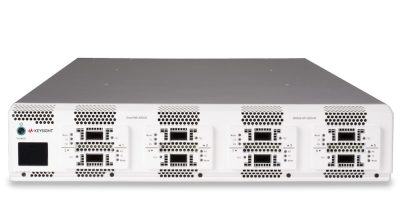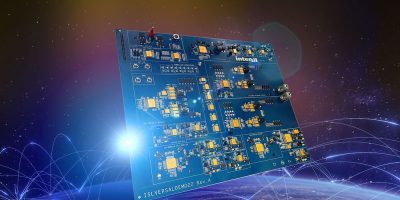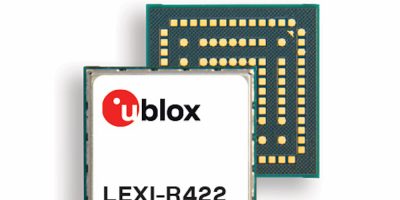Layer one to three Ethernet testing is provided on a single platform by Keysight’s AresONE-M 800GE. It supports data centre interconnect speeds from 10GE to 800GE and validates network equipment interoperability and bandwidth performance to support transition to 800GE, said the company.
Data-intensive applications such as AI, high resolution video streaming, the IoT, 5G, edge computing and cloud computing require a secure and reliable 800GE network infrastructure, Keysight explained. Deploying 800GE into existing network infrastructures creates complex testing challenges for network engineers, introducing a variety of new and legacy networking protocols, multiple Ethernet speeds and an array of fibre and copper data centre interconnects (DCI). To properly validate the performance of network infrastructures and network system designs, equipment manufacturers and network operators must have a flexible test platform that can scale to evaluate mixed-speed networks while supporting a broad set of connections and network protocols.
The Keysight AresONE-M 800GE delivers the only Layer 1 to Layer 3 Ethernet networking and infrastructure test, said Keysight, supporting comprehensive DCI speeds from 10GE to 800GE in a single platform. Its range of capabilities enables design engineers and data centre operators to validate networking equipment interoperability and bandwidth performance while supporting the transition to 400GE and 800GE networks with the capability to also test slower, legacy Ethernet speeds.
In addition to comprehensive Ethernet speeds of 1x 800GE, 2x 400GE, 4x 200GE and 8x 100GE, it supports PAM4 and NRZ signalling. The AresONE-M 800GE features 106.25Gbit per second host electrical lane signalling with the ability to downshift to the lower electrical lane speeds of 53 and 25Gbits per second for 400GE and 100GE speeds.
The single test platform supports all required forward error correction (FEC) types and a full array of in-depth link tuning, stability, reliability, and performance measurement statistics.
It also provides the protocol support required to test enterprise, metro, and cloud-capable Layer 2 and Layer 3 switching and routing network equipment through the IxNetwork software application.
It is claimed to have the highest port density available today for 800GE test systems with support for eight ports in a single, two-rackmount unit chassis with additional configurations for two and four ports.
The AresONE-M 800GE uses an integrated physical layer digital signal processor (DSP) from Credo Technology Group for fast and efficient data transfer with low latency that enables data transit requirements of hyperscalers, enterprises, 5G carriers and service providers. The DSP is also claimed to optimise power consumption to reduce operational costs, minimise heat dissipation and meet energy-efficient standards for advanced networks.







